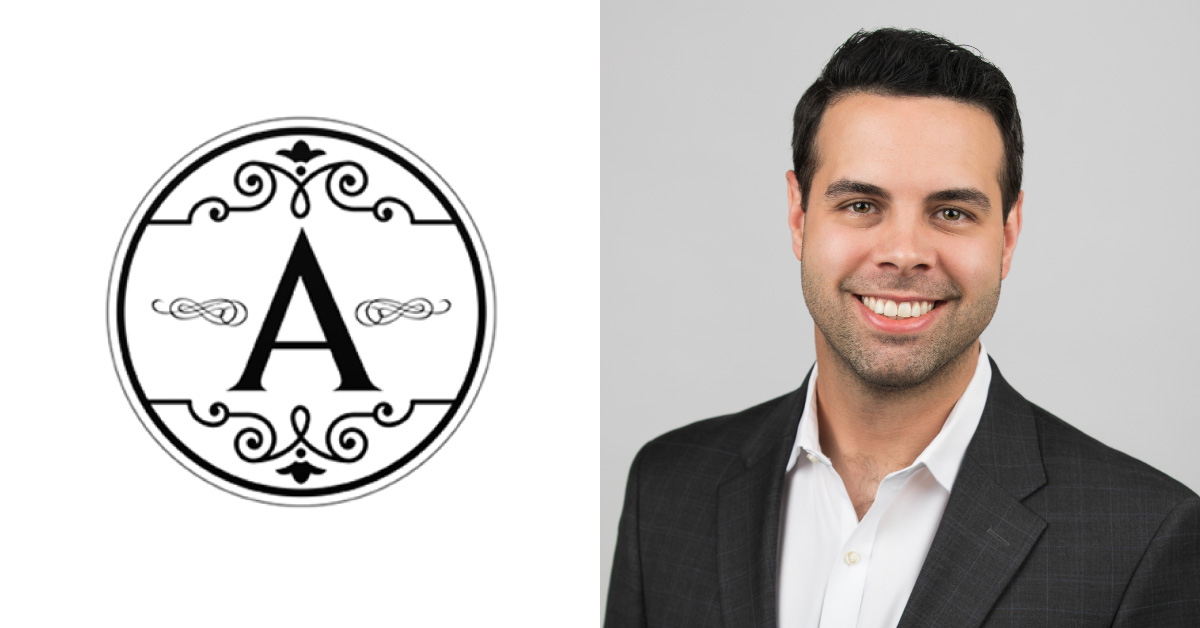THE SKILLS GAP: DEFINITION & SCOPE
Employers Are Noticing a Skills Gap at the Entry Level
The skills gap has been addressed and dissected from multiple angles—from media thought pieces to academic studies to government statistical analyses.
Our focus, however, is a bit different from previous explorations of the issue: this report examines the unique qualities and impacts of the skills gap at the entry level—particularly from the employer or hiring manager perspective. While the skills gap has huge implications for mid-career workers and beyond, our focus here is the roles that launch workers’ careers and serve as a major source of a businesses’ talent pools.
What Do We Mean by Entry-Level Jobs?
In this paper, “entry level” means a worker’s first, professional, post-college, “real” job. In traditional corporate settings, these roles allow new workers to gain hands-on experience by applying the knowledge they gained in college to real-world situations. For employers, they are a way to accomplish necessary business tasks that don’t require advanced skills—tasks that more experienced workers prefer not to do, and that companies don’t want to pay a premium for. Entry-level roles are also a major source of talent for organizations: developing homegrown talent into productive, experienced employees is much more affordable than hiring experienced people from outside.
The Scope of the Skills Gap
How big is the skills gap, exactly? What kind of impact is it having on companies and the economy? A quick recap of recent studies in this area reveals a clear answer: it’s pretty big.
- One study estimates that the skills gap will cost the U.S. economy $1.2 trillion over the next decade.
- A McKinsey Global Institute report found that up to 375 million workers worldwide may need to find new occupations as digitization, automation, and artificial intelligence continue to disrupt the workplace.
- The World Economic Forum found that only 27 percent of small companies and 29 percent of large companies believe they have the digital talent they require.
- In a study by the Society for Human Resource Management, 83% of human resources professionals surveyed said they had trouble finding suitable job candidates within the last 12 months.
- A recent study found that 79% of CEOs worry that their employees’ current skills aren’t enough to meet quickly changing workplace needs.
- Another study found that almost 40 percent of U.S. employers can’t find people with the skills they need, even for entry-level jobs.
- In that same study, 60 percent of employers said that job candidates show a lack of preparation for the roles they seek.
- In a study by LinkedIn, 59% of hiring managers said soft skills were difficult to find, and this gap was impacting productivity.
- The 2018 LinkedIn Emerging Jobs Report found that oral communication, leadership, and time management were the biggest skills gaps for entry-level business roles.
- Another recent survey found that 90% of hiring managers said it was difficult to find the right technology talent.
- In that same study, 83% of hiring managers said the lack of technology talent was slowing their revenue growth
- 41% of employers say entry-level roles are the hardest to fill.
What Kind of Skills Are Involved? Hard Skills vs. Soft Skills
When employers talk about a skills gap, they’re concerned about skills that fall into two areas: hard skills and soft skills. Hard skills get most of the attention. Scan the morning headlines and it won’t be long before you see a news story about the need for more STEM (Science, Technology, Mathematics, Engineering) education or the lack of workers with coding skills. But many employers say the need for soft skills is just as great, particularly for entry-level roles.
Hard Skills
Hard skills are abilities in specific areas. They’re tangible, measurable, and observable. Workers build hard skills through training or education, or through work experience. They can demonstrate objectively that they have these skills, and workers might even be able to earn certifications or other credentials for them. Examples include:
- Software proficiency
- Computer programming languages
- Mathematics
- Engineering
- Applied sciences
- Proficiency in more than one language
- Mobile development
- Digital marketing
- Information technology security
- The ability to use certain software or manufacturing technologies
Soft Skills
Soft skills, on the other hand, are a bit fuzzier—but they may be more valuable. Soft skills are the personal habits or traits that enable someone to work well with others. They are much more difficult to quantify and teach. But soft skills will serve workers well in any role. And they’re adaptable to new technologies. These include:
- Communication, whether oral or written
- Collaboration and teamwork
- Critical Thinking
- Problem Solving
- Time Management
- Leadership
- Creativity
- Integrity
- Professionalism
- Customer Focus
- Initiative
THE SKILLS GAP: CAUSES
What’s Causing the Skills Gap?
As with any large economic trend, the causes of the skills gap are complex—and there’s disagreement about them. It’s impossible to pinpoint any one cause. But here are some commonly cited contributors.
The Explosion of Technology in the Workplace and Beyond
In every industry, technological change—particularly digital technology—has transformed the way work gets done. Communicating with coworkers, managing inventory, selling products, marketing, gathering and interpreting data, accessing financial information, tracking work hours—all these tasks are now accomplished through digital technologies that didn’t exist just a couple of decades ago. The U.S. education system hasn’t kept up with the rate of change, and many workers start their careers without key digital skills. And even though today’s new workers are “digital natives,” they don’t necessarily have skills in specific applications that businesses use.
Demographic Shifts in the Workplace
Another potential contributor to the skills gap is a confluence of broad demographic forces that, together, have made it harder for employers to find qualified workers.
- Boomer Retirements. Every day, more than 10,000 Baby Boomers turn 65—a phenomenon that will continue over the next decade. These workers are more experienced, and when they leave, they create a skills-loss double-whammy: they take their skills out of the workforce, and by leaving they also prevent those skills from being passed on to younger workers.
- Falling Labor Force Participation. The labor force participation rate—that is, the percentage of eligible workers who are working or seeking employment—has dropped over the past several decades, and particularly since 2000. For men of prime working age, it has been falling for more than half a century. The causes of this are extremely complicated and much debated, but the outcome is not: fewer workers in the labor pool. Most of those dropping out of the workforce are older workers, but their absence has an impact on entry-level roles: fewer workers available to mentor and train new employees.
- Fewer Teens Work. With their eyes firmly fixed on college applications, anxious teens (or more accurately, their parents) are increasingly devaluing the type of paid work that teens have done for decades—in food service, retail, seasonal labor, and more—in favor of excelling at school, participating in sports programs, and pursuing academic enrichment activities. The result? Many more young people graduate college without ever having held a job—so they have no demonstrable experience in some of the basic skills (customer service, communication, teamwork) that employers look for.
Decreased Federal Funding for Job Training
Over the last 40 years, federal government spending on jobs and skills training has declined—from a high of $24 billion in the late 1970s (adjusted for inflation as of 2017) to about $5 billion today. Much of that funding is targeted at low-income or mid-career people, but the overall trend is undeniable: fewer resources for skills training in the workforce.
Skills “Inflation” in Job Descriptions
A fascinating study recently showed that during the Great Recession of 2007 – 2009, job postings saw an 18% increase in education requirements and a 25% in experience requirements. Why? Because unemployment was high, and employers could be choosy. So they packed more and more required skills into job descriptions, hoping to find near-perfect candidates. But even though unemployment rates have fallen below 4%, employers are still asking for the moon. The result? Today job descriptions are crammed full of experience and skill requirements, even at the entry level. This screens out many job seekers who would be successful employees.
SKILLS GAP: POSSIBLE SOLUTIONS
There Is No Silver Bullet
We highlight several skills-gap solutions below, but it’s important to recognize that addressing the skills gap will require action on multiple fronts. No single solution will significantly reduce the skills gap on its own. It’s also important to recognize that no single group can solve the problem either. It’s not enough to simply tell workers, “You should go back to school and learn new skills,” or to tell universities, “you need to update your curricula immediately.” Effective solutions will require joint efforts from multiple stakeholders.
Employer Training Programs.
Alarmed by their inability to find workers with the skills they need, many some companies—particularly those with deep financial resources—are taking matters into their own hands. AT&T has committed more than $1 billion to retrain workers over the next several years. Amazon has announced a $700 million investment in upskilling its workforce—training more than 100,000 employees to move into new roles. In Amazon’s case, they’ve built their own in-house tech academy to teach skills in machine learning, robotic systems, and cloud computing. JPMorgan Chase has announced a $350 million initiative to prepare for the future of work and meet the growing demand for skilled workers, including those from underserved populations.
Partnerships Between Business and Education
In an Inside Higher Ed survey of university chief academic officers, 56% felt their institutions were “very effective” in preparing their students for the workplace. But in a Gallup survey that asked the same question of business leaders, only 11% agreed. Clearly there’s a disconnect. That’s why business-academic partnerships hold such promise to address the skills gap. Examples include a collaboration between Adobe and New York University to create a center for the Future of Work, where students apply their learning by using Adobe technologies on real-world business issues. The open-source solutions provider Red Hat launched an “open innovation lab” with Boston University, where students and entrepreneurs explore emerging technology like machine learning. Because the skills gap is often localized—that is, different areas in the U.S. see different types of skill shortages—partnerships between businesses and their local education institutions can be particularly powerful.
Third-Party Credentials
Employers today are learning to focus most on job skills and less on education experience. But how can job seekers demonstrate that they have the skills employers want? Third-party credentials are one intriguing answer. Many professional organizations already do this, by conferring credentials that are recognized throughout certain fields (the SHRM-CP for human resources professionals; PMP for project management; CISSP for IT security). And many organizations are at work in this area, attempting to create a framework whereby skilled workers could receive independent validation of their abilities from a credentialing agency—validation that would be recognized by employers across industries. There are many challenges ahead, including the not-insignificant task of getting businesses to agree on which credentialing bodies to trust, but the potential is huge: rather than spending tens of thousands on university degrees, workers could gain skills in whatever way works best for them, and then pay a small fee to have those skills certified.
Upskilling
According to recent research, today’s graduates with technical, job-specific skills will find those skills outdated in only six years. A report from the World Economic Forum found that 54 percent of all employees will require significant re- and upskilling by 2022. Put simply, upskilling means adding new skills to a worker’s capabilities. It could involve traditional learning methods like university courses, mentoring, or apprenticeship programs. Or it could take a newer form, like technology boot camps. Or “microlearning” (targeted training delivered in short bursts), augmented-reality-enabled learning, gamification, or mobile apps. The methods vary, but effective upskilling is specific, based in real-world examples (no theoretical noodling here), and immediately applicable. Unlike the traditional university degrees, upskilling is never “one and done”—and it demands a much smaller investment of time and money.
Outsourcing
Where there’s a problem, there’s an opportunity. And multiple innovative firms are stepping in to offer solutions to businesses who struggle with entry-level hiring. In some cases these are traditional staffing agencies, who leverage their experience in candidate screening and placement. But there are also many new players applying new approaches and new technologies to this issue. Author and education-technology investor Ryan Craig (full disclosure: he is a member of Avenica’s board of directors) has said, “Entry-level hiring in America is the next function to be outsourced, where we see large employers looking to their relationships with service providers and staffing companies to bring in talent on a try before you buy basis to eliminate that hiring friction.”
Re-Think Entry-Level Hiring
When technology is changing constantly, hiring for specific skills isn’t the best strategy. It makes more sense to hire for the right person—and then upskill them with the skills you need. Fortunately, more companies today are realizing this: in a recent survey by Robert Half, 84 percent of employers said their company is open to hiring an employee who can grow into their role. Especially at the entry level, you want someone who will connect with your company’s values and culture—and has key characteristics like integrity, initiative, adaptability, and a hunger to learn. Further, employers should shun the “skills inflation” we mentioned earlier. Especially at the entry level, does it make sense to require 3+ years of industry experience? Do new hires really need to know 7 different programming languages? Get rid of the nice-to-haves and focus on the skills it actually takes to do the job.
Final Thoughts
The skills gap is real. It’s large. And it’s complicated. But there are things your company can do to increase your chances of making good entry-level hires—particularly if you’re willing to use different approaches and open to partnering with education institutions and other organizations that can help.
As a positive final thought, it’s worth considering this: imagine what our economy would look like if employee skills didn’t need to change frequently. How vibrant would our society be if everybody could learn everything they needed to know when they were young, and never have to learn anything new? While the skills gap is painful for hiring managers and companies, the alternative—a stagnant economy, without mobility or innovation—would be much, much worse.
–
Looking for a new role? Browse our current job openings and apply today!








